Herbs & Plants. Catharanthus roseus. An Anti-Cancer Plant.
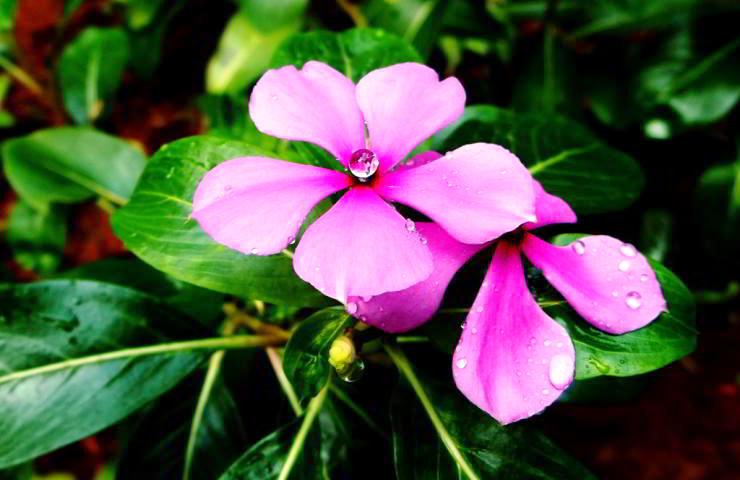
It is one of the well-known medicinal plants that originated from the continent of Africa.
The plant is commonly known as the Madagascar periwinkle or Vinca rosea. It is a tender, perennial plant that grows as an herb or subshrub, sprawling along the ground or standing erect, reaching approximately one metre in height. Leaves are simple, petiolate, and opposite, with a greenish-glossy appearance. Flowers are typically white or pink, comprising five petals spreading from a long, tubular throat. However, different cultivars produce various shades of flowers, including one with a unique reddish-orange hue. Each fruit consists of two narrow, cylindrical follicles containing numerous grooved seeds. The plant thrives in limestone and sandy soils, particularly in grassland, woodland, or forest environments.
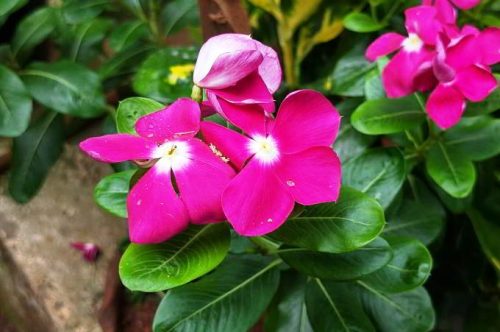
The plant has gained worldwide recognition over the years for its exceptional medicinal benefits. CC BY-SA 3.0/Vengolis
The extensive use of Catharanthus roseus in traditional medicine worldwide can be traced back to Madagascar, where it has been used for centuries to address a number of diseases and disorders, including the treatment and management of leukaemia, diabetes, sore throats, malaria, eye irritation, wasp stings, and microbial infections. It is frequently used as an expectorant, astringent, or diuretic. Its use as a bitter tonic, galactagogue, and emetic is also common in traditional medicine. Over the years, the plant has gained worldwide recognition for its exceptional medicinal benefits.
Across the African continent, the decoction of the plant’s leaves is used in traditional medicine to treat and manage diabetes, as well as to treat malaria. Traditional healers also apply a poultice made from powdered leaves to treat inflammation and joint pain. An infusion of the leaves is used to control heavy bleeding during menstruation and stomach cramps. The leaf decoction is also administered orally to induce vomiting in certain circumstances. The extract of boiled leaves is applied to affected areas of the skin to neutralise insect stings, including wasp and bee stings. Traditional healers also administer the leaf decoction orally to treat indigestion and constipation.
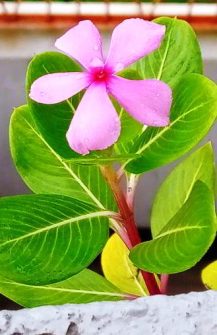
The roots are also valued for their medicinal properties. CC BY-SA 4.0/Ahp101
Apart from the leaves, the roots of the plant are also highly valued for their medicinal properties. For instance, root decoction has been used as a laxative and haemostatic agent, as well as for relieving toothache, for many years. It is also used to treat intestinal parasites (including expelling worms) and dysentery. The Catharanthus roseus plant has also reportedly been used to treat and manage hypertension and insomnia. Furthermore, the plant is boiled and used as a gargle to ease sore throats and laryngitis, as well as to treat chest-related ailments. The decoction of the entire plant is also used to treat tuberculosis and high blood pressure. In some communities, traditional health practitioners use a decoction made from the flowers to treat flatulence and asthma. The boiled mixture of leaves and flowers is also administered orally for the treatment and management of diabetes. The milky sap from the plant’s shoots
is used to heal wounds.
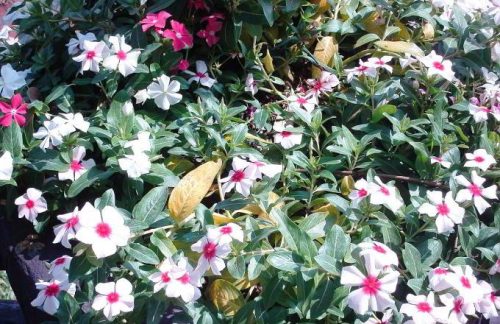
The plant is also used to treat hypertension and insomnia. Photo: Love Krittaya
The Catharanthus roseus herb is also used to treat acne, as well as eczema and other skin conditions. Indeed, the plant can effectively cure several skin diseases and disorders. It is also known to be used to treat nosebleeds and gum inflammation. A decoction made from the leaves is administered orally for the treatment of haemorrhoids.
Apart from its highly valuable medicinal applications, Catharanthus roseus is one of the most colourful and attractive ornamental plants, and is grown in many homes to add beauty to the environment.
Interest in the Catharanthus roseus species arises from its therapeutic roles. It is uniquely important because it is the only source of the anticancer alkaloids vincristine and vinblastine, which are difficult to synthesise in a laboratory due to their complexity.
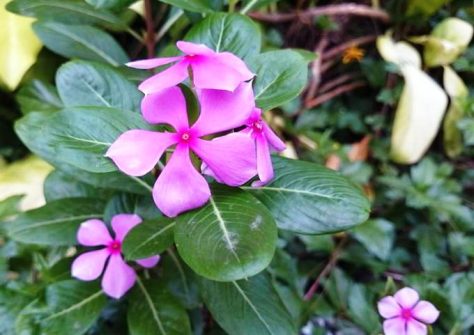
The plant is a potent source of medicinal support. CC BY-SA 3.0/Ameerulislam
Other biologically active compounds found in the plant include serpentine, catharanthine, ajmalicine, akuammine, lochnerine, lochnericine and tetrahydroalstonine. These active substances have anti-carcinogenic, antioxidant, hypoglycaemic, anti-allergic and antibiotic properties, and are therefore essential for healthy bodily function. Indeed, this plant’s anti-cancer properties are attributed to the presence of vincristine and vinblastine.
Due to its unique importance, there has been an increasing desire to protect the plant. Consequently, Catharanthus roseus is now listed as endangered on the Red List of Threatened Species by the International Union for Conservation of Nature and Natural Resources, due to its declining population. To date, the plant remains one of the most potent sources of medicinal support for tackling several ailments that pose a danger to human beings. With more research, its medicinal potential could be fully exploited to treat many human diseases in the near future. (Open Photo: Catharanthus roseus. CC0 /Arun.punnathatta)
Richard Komakech



